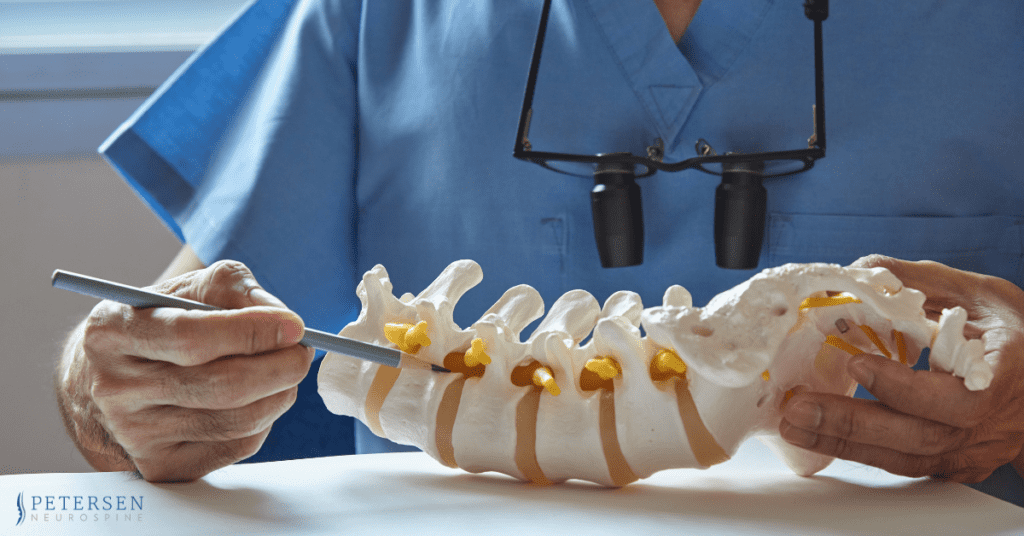
Spondylolisthesis is when one vertebra is unstable and slips on the vertebrae below. Often occurring in athletes, it can be asymptomatic or can cause severe pain.
Here we will uncover what spondylolisthesis is, what causes it and how it’s treated.
What is Spondylolisthesis?
Deriving from the Greek words “spondylos” and “listhesis,” which translate to “spine slipping,” spondylolisthesis occurs when there is instability (or slipping) in the spine that causes a vertebra to slip out of place onto the vertebrae below. This slip in the spine can put pressure on the nerves that lead to the lower back and legs, causing pain in those areas. It’s often confused with spondylolysis, which is a spinal stress fracture, also very common in athletes.
Causes of Spondylolisthesis
Most often, spondylolisthesis is caused by overstretching of the lumbar spine, which can typically happen in sports like gymnastics, football and weightlifting. This type of repetitive activity weakens the disks that cushion the vertebrae, causing them to slip.
Another common cause is genetics. General wear and tear in people born with thinner vertebral bones makes them more susceptible to slipping of the vertebra.
The last cause, like many spinal issues, is age. Degenerative spondylolisthesis is the most common type of spondylolisthesis and typically occurs after the age of 50.
Types of Spondylolisthesis
There are three types of spondylolisthesis: congenital, isthmic and degenerative.
- Congenital spondylolisthesis is a condition you’re born with. It occurs when the vertebrae are misaligned, which can cause slipping as you age.
- Isthmic spondylolisthesis happens as a result of spondylolysis, a spinal stress fracture.
- Degenerative spondylolisthesis happens due to aging and overuse.
Spondylolisthesis Treatment
For most patients, spondylolisthesis can be improved with nonsurgical treatment methods, including rest, use of anti-inflammatory drugs, physical therapy and bracing. If the patient is dealing with severe pain and slippage or slippage that is getting progressively worse, a spinal fusion may be needed. The spinal fusion will connect the lower lumbar and the sacrum to prevent further slippage and damage.
If you’re currently living with spondylolisthesis or are experiencing unexplained lower back pain, it’s time to book an appointment with a spine specialist like Dr. Petersen.
ABOUT PETERSEN NEUROSPINE
Dr. Bendt P. Petersen is an orthopaedic and neurospine surgical specialist with over twenty years in operative clinical practice. He is a fellowship-trained surgeon whose practice is the only one in the Mobile-area devoted exclusively to the treatment of your spine.
The Center for Spine Health employs the most advanced operative and non-operative therapies in concert with the most highly-trained physical therapists and other advanced ancillary practitioners to help you live the life you want to live.

